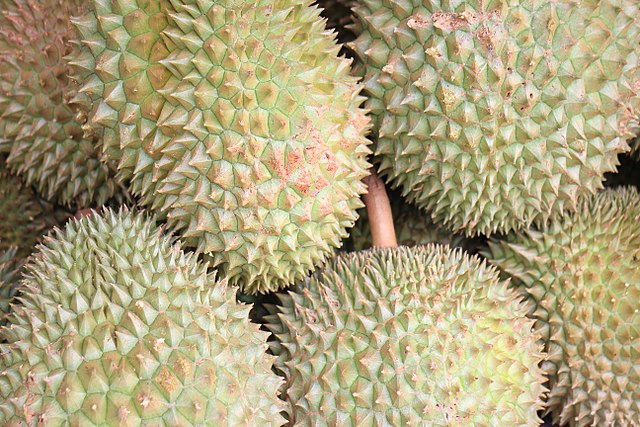A May 2025 China-Indonesia frozen durian (Durio zibethinus) direct export protocol is unfreezing hitherto unimpressive trade, a month on.
This at a time when transit durian exports from Indonesia to China barely reached 27 tonnes in 2024, reports the IDX Channel.
Hence, direct long haul exports of the frozen fruit could find a perpetual market for Indonesia’s current 2 million-tonne production capacity.
Furthermore, according to Eliza Mardian, a researcher at the Center of Reform on Economics Indonesia, direct shipment protocols eliminate licensing challenges.
Mardian told Xinhua on June 24, 2025 that current licensing of transit freight takes long due to aseptic measures and transit via Thailand.
Another challenge has been quality disparagement due to long distance, a huddle that frozen fruit certification by Indonesian Quarantine Agency will eliminate.
Central Sulawesi: a Main Beneficiary
Key beneficiaries of this bilateral frozen fruit agreement will be growers in Central Sulawesi to the east of Borneo Island.
As the leader of regional production, the central province’s Parigi Moutong Regency boasts above 1,100 hectares of durian orchards with around 110,000 trees.
During the durian export deal negotiations in 2024, Senior Minister Luhut Binsar Pandjaitan had calculated possible gains for local regencies. He had cited that a single regency could generate 1.5 trillion rupiah (approximately $100 million) from durian exports to China, annually.
Then in late December 2024, the Coordinating Minister for Food Affairs Zulkifli Hasan had appraised China’s total international durian imports at 128 trillion-rupiah ($8 billion).
Hasan however noted that Indonesia must specialize on whole fruit exports as the alternative durian paste shipments bring low pricing abroad.
Besides, most durian products from Central Sulawesi and other regions trasit via Thailand before reaching China, adding logistical costs.
And on June 4, 2025, Central Sulawesi’s governor, Anwar Hafid furthered the message by vowing to maximize durian potential via direct shipments.
Quality will be key for Jakarta to compete with durian-rich Thailand, which in 2023 commanded a 3/4 export share in China.
Despite long distance logistics and competition, China-Indonesia trade can prosper from the huge 1.4 million-tonne Chinese durian market, as of 2023. And as the data below illustrates, the southeast Asia nation has the major advantage of ranking third globally in production.
China-Indonesia Durian Statistics
Despite the fruit’s low identification with Indonesia, durian is native to the country’s islands of Borneo and Sumatra. However, the southeast Asian nation remains the world’s third biggest durian producer after Malaysia and Thailand. Production hit some 2 million tonnes in 2024, according to Xinhua, quoting Statistics Indonesia. Due to a 4% growth rate per annum, the above output is more than double the 750,000 tonnes of 2014. However, only 592 tonnes of the total harvest undergo exports, as of 2023. Out of this, China imports only 27 tonnes of durian from Indonesia, as of 2024. This is despite China boasting an annual durian import value of $6.2 billion in 2024, according to the Eurasia Review.
Do Indonesia’s durians have big potential in the China market?
In 2024, senior Minister Kuhut Bisar Pandjaitan cited that Indonesia could earn 1.5 trillion rupiah ($100 million) annually from durian exports to China. So far, the country has a negligible market share in China where Thailand dominates 40% of durian import trade, as of 2021. So, to reach the target, China-Indonesia durian trade must up from single-digit tonnes [currently 27 tonnes in 2024). This also means surpassing the tonnage to Malaysia, the biggest importer of Indonesia’s durians, which amounted to 94 tonnes in 2020.
Is Indonesia a big durian consumer?
Despite retaining most of its durian output, Indonesia has a moderate durian consumption rate of 1.18 kg per person per year (2013). For this reason, some of the durian goes to make other end products such as paste for home use and export.
